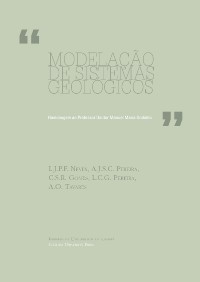Please use this identifier to cite or link to this item:
https://hdl.handle.net/10316.2/36290| Title: | Garnering green energy from granites: lessons and opportunities from a UK perspective | Authors: | Stephens, William | Keywords: | Granite;Geothermal energy;Scotland | Issue Date: | 2011 | Publisher: | Imprensa da Universidade de Coimbra Laboratório de Radioactividade Natural da Universidade de Coimbra |
Journal: | http://hdl.handle.net/10316.2/36282 | Abstract: | The concept of extracting geothermal energy from hot granitic rock sources at depths of 3- 5 kilometres is enjoying a renaissance as a practical concept, and several prospects worldwide are under development. It is noteworthy however that very few hot rock prospects are being developed at latitudes affected by Pleistocene glaciation. Here we examine three regions of high heat producing granites in the United Kingdom that were located either beneath thick ice (Eastern Grampian Highlands of Scotland, North of England) or beyond the ice limit (Cornubia). Heat flow measurements made in 30 relatively shallow boreholes and mines (≤300 metres) do not correlate well with heat production as estimated from the concentrations of radiothermal elements, with anomalously low heat flow values restricted to boreholes located in areas covered by Pleistocene ice sheets. Maximum ice sheet thickness is estimated using a model of glacio-isostatic rebound and used as a proxy for the magnitude of the glacial cooling and inter-glacial warming effects on near-surface heat flow. No significant correlation is observed between measured heat flow and heat generation despite all areas having large negative Bouguer gravity anomalies indicating thick batholithic masses of granite underlying all boreholes. However a strong correlation is observed between heat flow and maximum ice thickness suggesting this is a primary control on present day heat flow at shallow levels. A deep borehole is required to test this hypothesis. The geochemistry of these high heat producing granites in Scotland is examined and their potassic and fractionated characteristics are used to show that other plutons in Scotland may share their heat generating potential. It is concluded that the East Grampian batholith in Scotland may have been mistakenly excluded as a region of hot rock geothermal potential, and its inclusion would add significantly to the UK’s hot rock resources. If this is a generic feature of glaciated terrains then many more hot resources may be hitherto unidentified in the higher latitudes of the northern hemisphere. | URI: | https://hdl.handle.net/10316.2/36290 | ISBN: | 978-989-97106-0-3 978-989-26-1009-2 (PDF) |
DOI: | 10.14195/978-989-26-1009-2_3 | Rights: | open access |
| Appears in Collections: | Modelação de sistemas geológicos: livro de homenagem ao Professor Manuel Maria Godinho |
Files in This Item:
| File | Description | Size | Format | |
|---|---|---|---|---|
| garnering_green_energy_from_granites.pdf | 2.85 MB | Adobe PDF |  |
Items in DSpace are protected by copyright, with all rights reserved, unless otherwise indicated.
